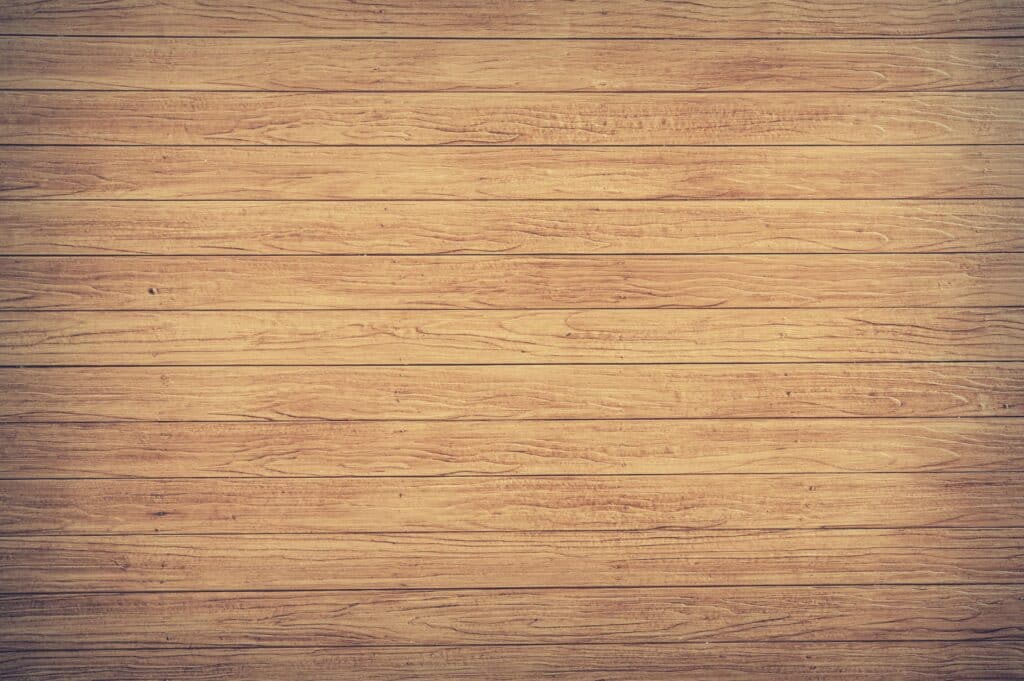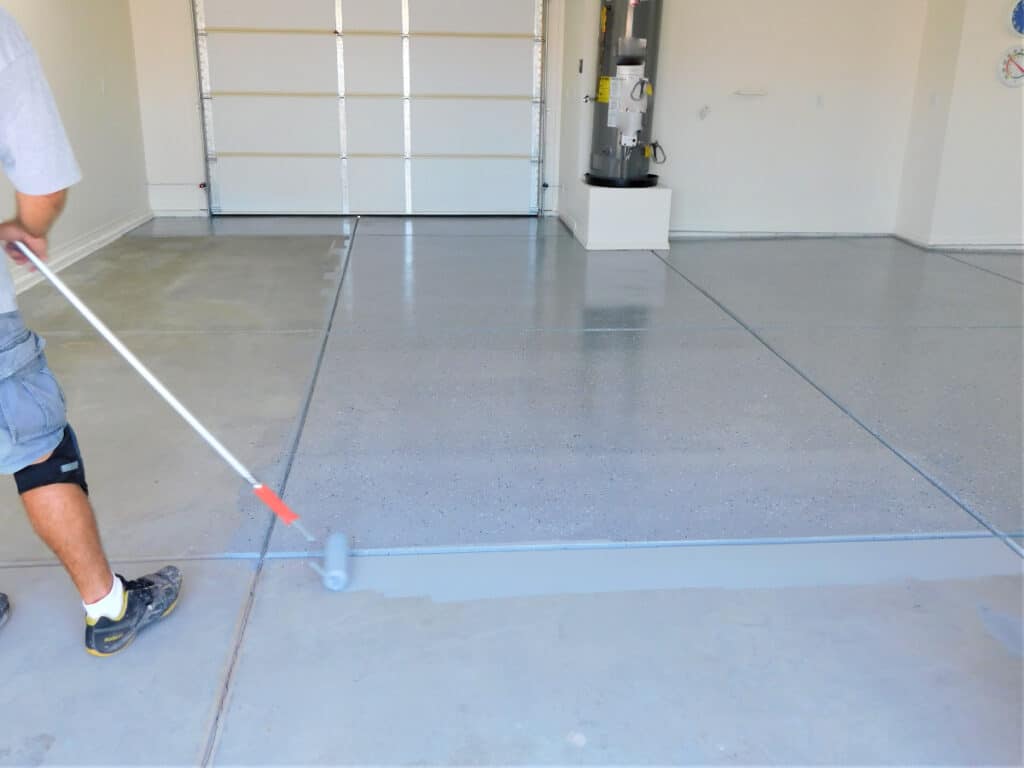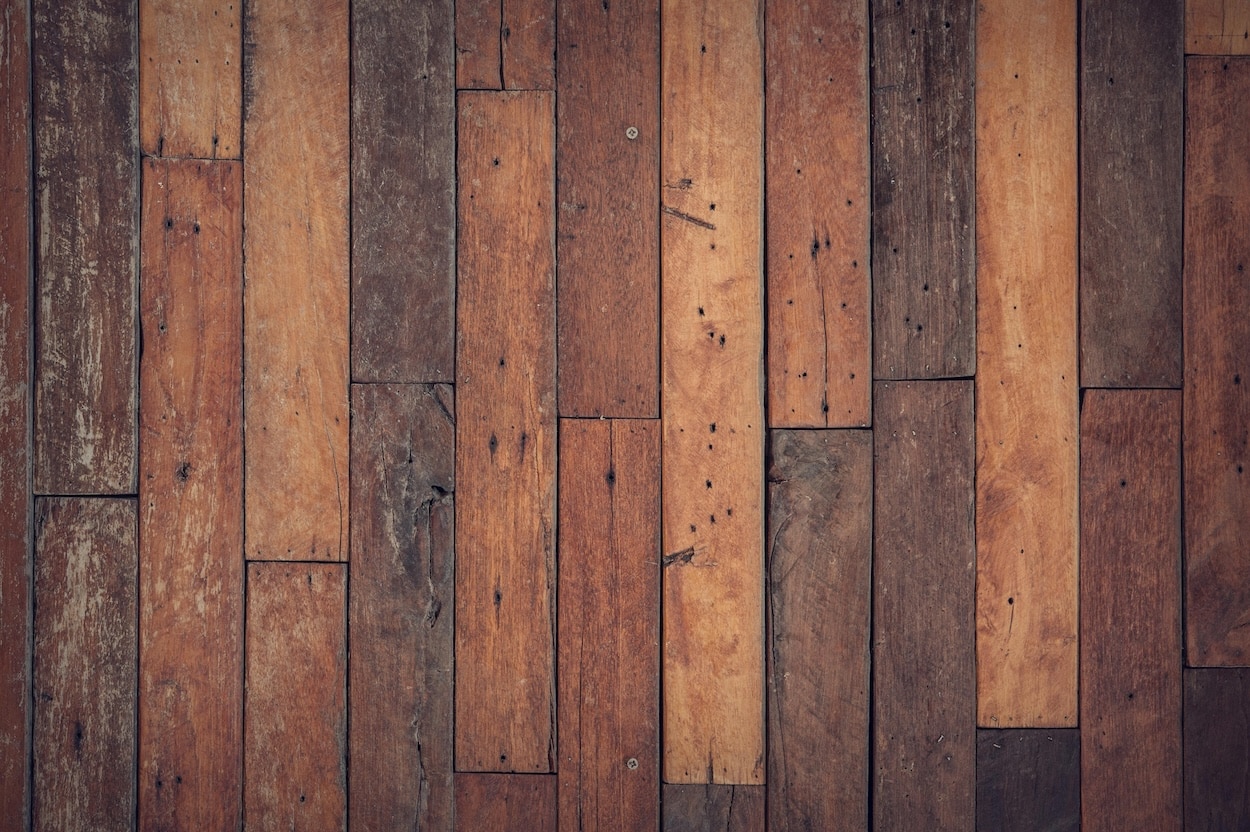Wood floors covered with epoxy deliver a unique mix of strength and style, but getting the application just right is a trick.
In this guide, you’ll find everything you need to know about why epoxy CAN work well on wood, how to get the floor prepped, and how to achieve a finish that’ll stand the test of time.
Why Choose Epoxy for Your Wooden Floors?
For most people, the goal is to restore or protect old wooden floors.
Epoxy coatings can give wood floors a fresh, polished look that holds up against the challenges of everyday life. They breathe new life into tired surfaces, keeping them looking sleek and pristine for years to come.
This solution is a smart way to combine cost-efficiency with a finish that’s built to last.
Epoxy isn’t just about looks—it adds resilience, spruces up the overall vibe of a room, and cuts down on upkeep. Whether you’re updating a workspace or a cozy family room, this coating can handle both the hustle and the occasional hiccup.
…First, The One Problem With Epoxy…
Here’s the one issue with an epoxy floor coating when it comes to wood: it can yellow with time and exposure to UV light. That means sunlight from the outdoors, even through windows!
To avoid this problem, we recommend polyaspartic coatings, which are UV resistant and actually more resilient against damage. For the simplicity of this article, however, we’ll use the two terms interchangeably. But for the sake of education, just know that polyaspartic coatings are a more modern, superior, and durable alternative to older epoxy floors.

Built Tough to Last
What sets epoxy apart is its strength. Once applied, this coating forms a solid shield that keeps wood floors safe from spills, scratches, and the wear that comes with daily activity. It can take on heavy footsteps, playful pets, and dropped items without losing its appeal.
Epoxy also shrugs off stains. When applied the right way and given enough time to cure, this protective layer can extend the life of your floors by decades. Think of a surface so sleek and polished, it’s almost too good to walk on—but don’t worry, it can take it.
Aesthetic Improvements
Epoxy coatings aren’t just about durability; they also offer significant aesthetic benefits. The high-gloss finish of epoxy coatings enhances the natural beauty of the wood, highlighting the grain patterns and color variations. This seamless, smooth surface creates a continuous look that can improve just about any space, making it more inviting and visually appealing.
Plus, using a clear epoxy coating can maintain the natural look of the wood while providing necessary protection. Additionally, the versatility of metallic epoxy floor coating offers a range of decorative finishes that can enhance wood floors or provide a completely new look.
Easy to Care For
If there’s one thing homeowners love, it’s floors that don’t need much fuss. Epoxy delivers on that front with a sleek surface that doesn’t soak up grime or stains. Cleaning becomes as simple as a quick sweep or a mop—no scrubbing, no stress. This means you can spend less time worrying about upkeep and more time enjoying the polished charm of your floors.
Getting Your Wooden Floor Ready for Epoxy Coating
Proper preparation is key to guaranteeing that your epoxy floor coating adheres well and lasts long. Skimping on this step can lead to poor adhesion, peeling, and a less-than-perfect finish. Whether you’re working with hardwood floors or even plywood, good preparation is essential.
(Additionally, you might consider a waterborne epoxy primer for priming wood surfaces for epoxy flooring, as it acts as a moisture barrier and is low in volatile organic compounds.)
Inspecting and Repairing the Floor
Before you dive into the application process, inspect your wooden floors for damage. Look for cracks, chips, and areas of rot, especially in older floors or those exposed to moisture.
Floors that aren’t level or have significant flaws can lead to cracking or peeling of the epoxy coating. A good intial inspection for rot, gaps, or instability are helpful before applying any coatings.
Cleaning and Sanding
Once the floor is inspected and repaired, proceed with thoroughly cleaning. The wood surface must be free of dust and dirt. Any residue can prevent the epoxy from adhering properly.
Using Luan Underlayment or A Plywood Epoxy Floor
If you’re looking for a low-cost flooring, a luan wood underlayment can be an easy way to get an epoxy-coated floor down.
Luan underlayment is lightweight and easy to handle, typically made from thin layers of wood veneer. When installed correctly, with screws placed every foot or so, it makes for stability and a smooth surface for the epoxy application or polyaspartic.
While we might not recommend for your Victorian home, luan or plywood for epoxy are perfect for cabins and other workspaces!
Picking the Right Solutions
When it comes to epoxy coatings, the options are as varied as they are exciting. Each type brings its own perks and possibilities, so it’s all about finding the one that fits your needs and vision.
From choosing the right resin to selecting a primer or exploring fresh alternatives like polyaspartic coatings, the products you pick will shape the final look and durability of your wooden floors. Let’s break it down so you can make a choice you’ll love for years to come.
Selecting an Epoxy Resin or Polyaspartic Coating
Selecting the right coating for your wood floors depends on a few key considerations, like the type of wood, how the space will be used, and the look you’re aiming for. Epoxy resins offer a versatile range of colors and finishes, making them a popular choice for those who want a custom look. They’re particularly tough, handling impacts and wear with ease—perfect for both functional and decorative spaces.
If you’re exploring polyaspartic coatings, these bring added durability, UV resistance, and faster curing times, offering a modern twist on traditional epoxy.
Using Epoxy Floor Primer
Apply a flexible epoxy floor primer to enhance adhesion and prevent air bubbles. This flexible epoxy primer helps address minor imperfections and assures a smoother, more durable finish.
Surfaces should be clean, dry, and sanded before applying the primer, and one recommended method is to use a fleece roller for even application.
The Application Process for Epoxy Coating on Wood Floors
Applying epoxy on wood floors is an adaptive process that requires some attention to detail. While some may attempt this as a DIY project, hiring epoxy flooring professionals is usually a better option for the best results.
Mixing and Preparing Your Epoxy Resin
The first step in the applying epoxy resin process is mixing the epoxy resin and hardener. This mixture must be precise to achieve the needed chemical reaction.
Applying the Epoxy Coating
Once mixed, the epoxy starts to harden quickly, so timing is everything. After mixing, apply the epoxy quickly and evenly across the surface using a roller or brush. When applying epoxy paint, prepare the surface properly, use appropriate primers, and ensure proper adhesion to prevent issues such as cracking and peeling.
Address air bubbles immediately during the curing phase to avoid finish imperfections. Trapped air and moisture beneath the epoxy can result in streaks, bubbles, and blisters, affecting the final look of your floor.
Curing and Finishing Touches
Curing is where the magic happens. The room’s temperature and humidity levels need to stay steady—fluctuations can lead to bubbling or uneven hardening. Good airflow is key to venting fumes and keeping things safe while the epoxy sets.
Common Mistakes to Avoid When Applying An Epoxy Coating
When applying epoxy coating to wood floors, it’s essential to avoid common mistakes that can lead to a failed application or a subpar finish. Here are some common mistakes to avoid:
Skipping Proper Prep Can Spell Trouble
The secret to a flawless epoxy finish starts with thorough preparation. Skimping on this step can weaken the bond between the epoxy and your wood, resulting in peeling, cracking, or a disappointing finish.
Start by sanding the surface until it’s smooth and even—this gives the epoxy something solid to grip. Cleaning is just as important. Any lingering dust, dirt, or debris can interfere with adhesion, so be sure to wipe everything down carefully before moving forward.
Take your time with the prep work—it’s the cornerstone of a successful application and a gorgeous, long-lasting result. By getting the details right from the start, you’ll set yourself up for a floor that’s as durable as it is stunning.
Why Polyaspartic Coatings Shine Over Epoxy
Epoxy coatings are a reliable choice, but polyaspartic coatings bring a fresh set of perks that make them stand out for many flooring projects. These advanced options offer faster drying times, better resistance to sunlight, and extra flexibility to handle impacts and heavy use.
Perfect for high-traffic areas, polyaspartic coatings create a tough surface that can take on everything from constant foot traffic to vehicle wear without breaking a sweat. Their quick curing makes them a favorite for projects that need fast turnaround, while their durability ensures the results will hold up beautifully over time.
Rapid Curing Speeds
One of the standout features of polyaspartic coatings is how quickly they set. In just a few hours, they’re dry to the touch, and within a day, they’re fully cured and ready for action. This means less waiting around and more time enjoying your newly finished floors, making them an ideal choice for projects on a tight schedule.
Superior Sunlight Resistance
Unlike traditional epoxy, polyaspartic coatings handle prolonged exposure to sunlight with ease. They’re highly resistant to yellowing and fading, keeping your floors looking fresh and vibrant over time. This UV stability makes them perfect for areas flooded with natural light, maintaining both their looks and durability for years to come.
Built to Withstand Wear and Tear
Polyaspartic coatings bring impressive flexibility and toughness to the table. Their ability to flex with minor shifts and absorb impacts makes them resistant to cracks and chips, even under heavy use. Whether it’s bustling foot traffic or hefty equipment, these coatings provide long-lasting protection in spaces that see a lot of action.

Wrapping It Up
Epoxy and polyaspartic coatings are game-changers for wood floors, boosting durability, style, and simplicity in maintenance. Whether you’re drawn to the glossy, enduring finish of epoxy or the quick-setting, sun-resistant benefits of polyaspartic coatings, both options bring something special to the table. By following the prep and application steps outlined here, you can achieve a stunning, long-lasting floor that handles daily wear with ease.
For those in the Finger Lakes region—Rochester, Geneva, Watkins Glen, Corning, Syracuse, and Canandaigua—Everlast Concrete Coatings is here to help. As your go-to experts in polyaspartic and epoxy solutions, we’d love to offer a hands-on consultation to find the perfect fit for your indoor or outdoor flooring needs.
Ready to revamp your floors and experience the incredible benefits of these modern coatings? Let’s make it happen.





